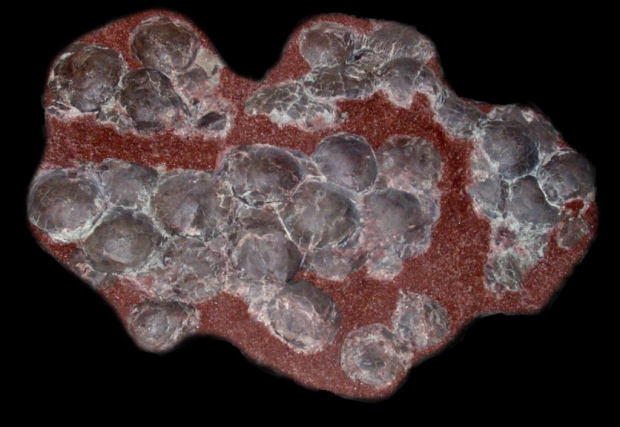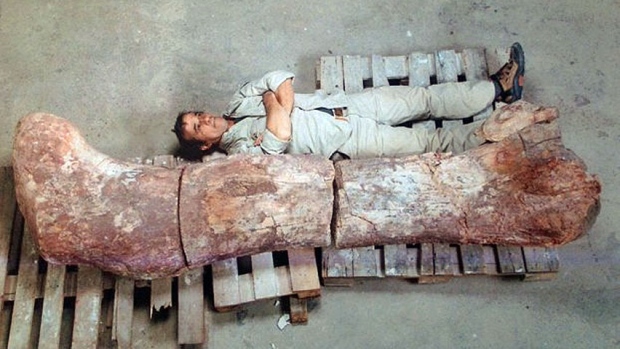Scientists have used the fossilized eggshells of dinosaurs to estimate their body temperatures — and have revealed some surprises.
Researchers have long debated whether dinosaurs were warm blooded like their living relatives, modern birds. In recent decades, the idea that dinosaurs — especially later, smaller, more bird-like dinosaurs – were warm blooded and active like birds, rather than more sluggish like cold-blooded lizards, has become more popular among scientists.
- Dinosaurs weren’t warm-blooded, study suggests
- Dinosaur blood cells, proteins found in crummy Alberta fossils
- New dinosaur finds soar in ‘golden age’ of dinosaur discovery

Bird-like oviraptors from Mongolia, pictured in an artists’ conception, had body temperatures that averaged 31.9 C, much lower than modern birds’ average of 36 to 43 C. ( Doyle Trankina and Gerald Grellet-Tinner)
The new estimates from an international team of scientists suggests some dinosaurs were quite warm blooded — huge, long-necked plant eaters called titanosaurs that lived in ancient Argentina had average body temperatures of 37.6 C. But more bird-like oviraptors from Mongolia had body temperatures that averaged 31.9 C — much lower than modern birds’ average of 36 to 43 C, but still higher than the temperature of the surrounding environment, which was estimated to be 26.3 C.
“The temperatures we measured suggest that at least some dinosaurs were not fully endotherms [warm-blooded] like modern birds,” said Robert Eagle, a scientist at the University of California, Los Angeles, who led the research. “They may have been intermediate — somewhere between modern alligators and crocodiles and modern birds.”
The results were published in the journal Nature Communications.

This clutch of fossil Titanosaur eggs was found in Argentina. The shells reveal the body temperature of the mother dinosaur when she produced them. (Luis Chiappe)
The researchers aren’t sure why the titanosaurs, which are generally considered more reptile-like and less bird-like than oviraptors, were warmer, but they suggested two possible explanations.
- Titanosaurs could have elaborate systems to regulate their temperature the way modern birds and mammals do.
- They might just stay warm more easily due to their large size, as leatherback turtles do.
The researchers estimated dinosaurs’ body temperatures by examining their fossilized eggshells. Eggshells contain small amounts of heavier forms of carbon and oxygen that tend to cluster together more when the temperature is lower.

A technician lies next to the femur of a Titanosaurus nicknamed ‘the giant’ at the Egidio Feruglio Museum in Argentina. Titanosaurs were huge, long-necked plant eaters that could grow up to 40 metres long. (Reuters/Museo Egidio Feruglio)
By looking at the amount of clustering of those isotopes, the researchers were able to estimate the body temperature of the mother dinosaur at the time she produced the eggs.
The researchers found the estimated body temperatures for the titanosaurs was similar to earlier estimates they had made based on their analysis of the dinosaurs’ teeth.
Courtesy: Article in CBC News
Key words: WFS,Riffin T Sajeev,Russel T Sajeev,World Fossil Society



 October 14th, 2015
October 14th, 2015  Riffin
Riffin  Posted in
Posted in  Tags:
Tags: 